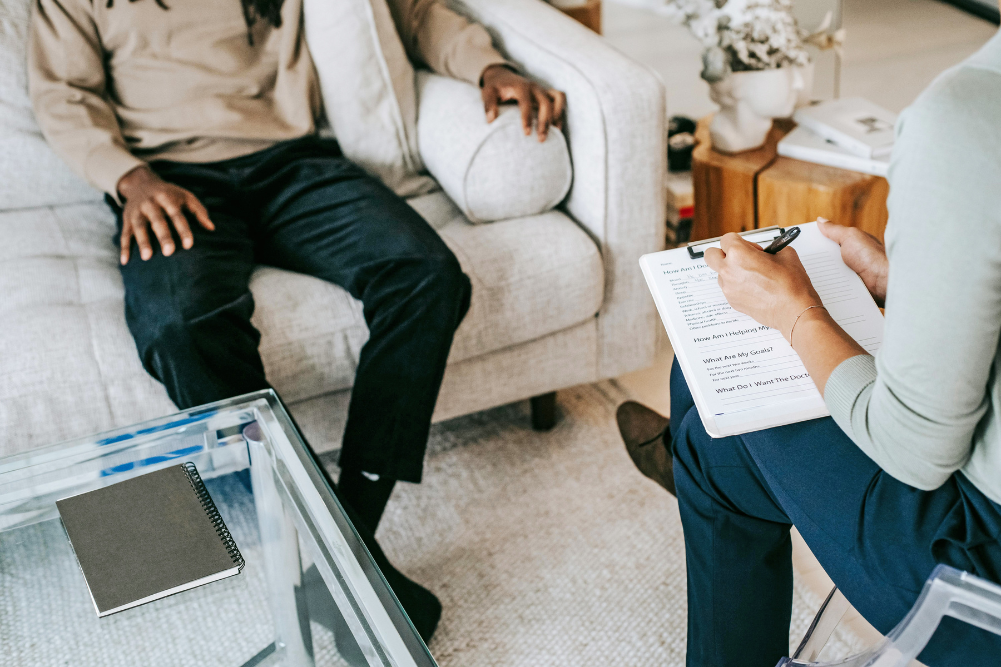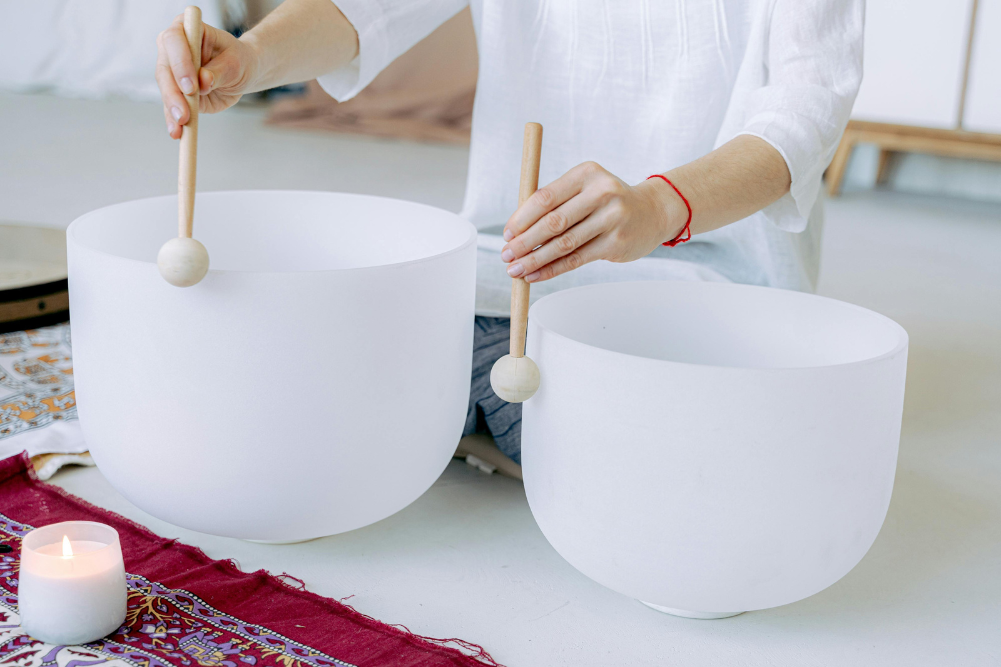Living life in the slow lane
As you seek to finish something or start something new in your life, it is your motivation, your energy and your ability that gets you across the line. What happens, though, when things that are out of your control stop you in your tracks and force you to slow down? How do you feel about these interruptions? How do you stay positive and motivated?
We all have distractions and limitations of some sort. For some it is a disability or an illness, for others a demanding job, study, family dramas or personal issues. These distractions and limitations disrupt your life and force you to take longer to get to your destination.
Living in a fast-paced, achievement orientated society it can seem that time is of the essence, that time is money and that the quicker the better, but is it such a bad thing to take longer to achieve what you set out to? Are there things to be gained from living life in the slow lane?
Insight
As you slow down you can begin to appreciate the journey over the destination. You can begin to realise that you can be happy even if you never reach your desired destination. It is the journey that shows and teaches you more about yourself, those around you, and the world at large. Time allows reflection, analysis and growth which brings greater truth and depth to the projects you work on, the relationships you form and the way you engage in the world.
It can be frustrating to say the least when something takes longer than you wish it would, but each extra day it takes to achieve your goals you are experiencing more of life, and that in turn gives you more insight and knowledge.
I have been living with Chronic Fatigue Syndrome for just over three years and it can be very frustrating when things take much longer than they used to. What might have taken me two weeks, can now take me months. It is challenging to find ways to stay motivated over a long period of time and not get upset about how long things take. I have found though, that what I can achieve is much better quality because of the time it has taken me.
Balance and wellbeing
If you desire to live a balanced life that promotes happiness and wellbeing, then living a slower life is the best way to get there. There is often a price to pay for ‘quick’ achievement and frantic living.
More times than I can count in order to achieve my goals I pushed my body too far and ignored the signs that I was doing too much. It is no surprise to me that I ended up with Chronic Fatigue Syndrome. I set highly ambitious goals with unrealistic timeframes accompanied by perfectionist standards which proved to be a recipe for disaster.
I know that I am not alone in living like this. It seems to be a product of modern times and personality that sees people pushing themselves to such extremes to achieve what they feel they want to, or maybe more problematically need to, in order to feel worthwhile, valued or important.
The price of doing it all
It is incredibly difficult to realise and accept that you can’t do it all and if you try there might be a high price to pay. It is not just illness that can be the price to pay, but sacrificing important time with family and friends or not having the time or energy to pursue hobbies and other creative outlets. There is also the risk that with little time for self reflection the price might be disconnection from your own life and your own sense of self.
Working with the natural flow
If you regard your motivation and momentum as a missile-like force with a powerful trajectory that takes you from start to finish, you will become easily frustrated when things get in your way and cause that trajectory to drop off. You would be better to envision your momentum as a powerful tide that comes in and out. For most of us this is how our life unfolds; we have moments of progress and times of reflection and stagnation, and then again times of energy and inspiration.
By respecting the ebb and flow of natural energy — energy not pepped up by caffeine and other stimulants — you can reduce the risk of burning out as you seek to reach your goals. It is a softer, more accommodating and compassionate way to treat your body, and the balance that you bring into your life will be beneficial.
Learning to say no
In order to live a healthy and balanced life it is necessary to learn to say no to some things, to accept that things may take longer than you planned. It is also necessary to accept that it is in your best interest to take a slower approach to life — slow and steady wins the race.
In order to live a more balanced life you need to expand your sense of self to include a lifestyle that supports you, rather than running you into the ground. As you learn to discern what is good for you, what won’t push your body beyond its limits and what will allow you to still engage in a variety of self nurturing behaviours, then you can also learn to say no with more confidence, less guilt and less anxiety.
Expanding your sense of self
When you live by the motto that ‘slow and steady wins the race,’ you also accept that you may not achieve as much as you had hoped, or in your desired timeframe. How does this affect how you see and feel about yourself?
Living slower forces you to investigate what you believe success and achievement is and what value you place on it. You are also confronted by the incredibly difficult question — ‘What do I base my sense of self on?’
Before illness I was a high achiever, pushing myself very hard and achieving a lot as a result. Since illness has forced me to slow down I have had to shift the way I view myself. It was confronting to realise that my sense of self was based on things outside myself — namely what I could achieve. When I was no longer able to achieve I wondered what worth I had and who I was without my ability to ‘achieve’.
Living slower allows, even forces, you to explore what is at the heart of who you are. When you remove outside factors like jobs, family, friends or money — the common indicators you use to confirm to yourself and others who you are — you come face to face with the realisation that you have no idea who you really are.
It is no easy task to know yourself, it is a journey that never truly ends as you move through life continually learning, changing and growing. What is does involve though is a willingness to move inside yourself.
One of my favourite poets and cartoonist, Leunig, expresses this shift in mindset beautifully. He says;
“…across the difficult terrain of our existence we have attempted to build a highway and in so doing we have lost our footpath…nothing can be loved at speed. God lead us to the slow path; to the joyous insights of the pilgrim; another way of knowing: another way of being…”
As you slow down and work with, rather than against, your limitations you start to listen to your body. You become more aware of what is happening around you and begin to learn more about what makes you the person you are. By slowing down you also have a chance to contemplate and connect with your soul, with your spirit.
Engaging with the spiritual
With a slower life comes a sense of stillness. This sense of stillness and quietness is what Stephanie Dowrick feels brings you to God and connects you with the spiritual part of yourself. With the fast paced nature of modern times, and the demands you place on yourself, it is easy to lose a sense of inner grounding and to lose connection with your spirit.
It can be years or even a lifetime before people stop to take stock of their lives. By slowing down, not only do you protect your body and health, but you also reengage — or engage for the first time — with the spiritual element of being human, the soulful element of life.
For some this takes the form of a religion, and for others it can be found through meditation, yoga, time in nature, listening to music or time spent in silent contemplation. The slowing down of life takes you inside, to the deeper and more sensitive parts of yourself.
As you connect with the core of yourself you can begin to see what might work for you in your life, things that you may never have considered before. Connecting with the spiritual aspect of yourself frees up your ability to think creatively, which often sparks a desire for creative living. In the same way, creative expression can connect you with your spiritual side.
Creative thinking and living
When you are confronted by your limitations there is a temptation to throw your hands in the air and to feel hopeless and depressed. The other option is to remain hopeful and to engage in creative thinking. When what you were capable of in the past is no longer an option, you need to look for new solutions, new ways of being and living.
The first step is to focus on the things you can do. You can often get stuck in the past and get bogged down in what you aren’t able to do anymore, but this gets you nowhere fast except highly frustrated, depressed and angry.
In my own life, and in those who I have spoken to who have significant limitations, the move to creative living has been expressed through creative and artistic activities. For some it is gardening, for others painting, drawing, bush walking, knitting, jewellery making, photography.
Creative expression is a wonderful way to connect with the things you love, to take your mind off your troubles and to help you focus on what you can do. It is an incredibly effective way to deal with frustration. It is a tool you can use to keep yourself positive and motivated amidst life’s struggles.
To illustrate the life changing and life giving choice to stay positive and motivated, I can think of no better example than the lives of Jean-Dominique Bauby and Peter Couche who faced incredible limitations in their life.
Slow and steady wins the race
Jean-Dominique Bauby, a Frenchman, and Peter Couche, an Australian, both suffered a stroke that left them with what is called ‘locked in syndrome.’ This syndrome is one devastating outcome of a stroke, leaving a person completely paralysed but with a fully functioning and active mind.
Jean-Dominique and Peter were both high flyers before their lives were drastically changed by this syndrome leaving them with unimaginable limitations. Peter was left with the ability to use one finger, while Jean-Dominique was able to blink one eye.
It’s hard to comprehend how in the face of such drastic and all encompassing limitations anyone could approach life in a positive way, but both men did.
Jean-Dominique Bauby is known for writing The Diving-Bell and the Butterfly which was later made into a movie. He ‘wrote’ this book through a devised communication system where someone would speak the alphabet and he would blink when they reached his desired word or letter and that was how his book was formed — a painstakingly slow process. He didn’t know how successful his book or the subsequent movie was, as he passed away from pneumonia two days after his book was published in 1997.
Peter Couche, a once highly successful Australian stock broker, while living with ‘locked in syndrome’ set up a business newsletter from home and also ‘wrote’ a book called Lifeline. This book he ‘wrote’ using the one finger he could still move to scroll through the alphabet on a computer to compose his book. His book took thirteen years to write and he is in the process of writing a second book.
There is a lot to learn from these two remarkable men. It is hard to imagine a story where ones limitations and frustrations could be any greater, but both used their incredibly small ability to achieve amazing things.
There are times when people’s triumphs over remarkable adversity allow you to take stock of your own life and limitations and view them with more optimism then you had been able to in the past.
There are valuable lessons to be learnt when you regard time and slowness as a gift rather than an adversity, and when you regard your limitations and distractions as part of life, part of you, without allowing them to overwhelm you.
By acknowledging and working within your limitations and embracing a slower life you learn that your sense of self must come from within and not from the things you achieve or the people that you know. Embracing a slower life, by choice or necessity, benefits your health and wellbeing, allowing you to live a life of balance and a life of self respect.
How to embrace and enjoy life in the slow lane
|
Jessica Stead is a freelance writer. Jessica has completed a BA (Hons) in Communications and has written a thesis on the role of hope in the lives of refugees. She is currently expanding her writing on hope and self-awareness based on personal experiences and interviews. E: jessicastead2225@hotmail.com







